Results
-
 £84.50
£84.50As Time Goes By (Vocal or Instrumental Solo with Concert Band - Score and Parts) - Hupfeld, Herman - Barker, Warren
It seems that every community or school has at least one vocal soloist just ready, willing and able to perform with your concert band. To fill the need for audience-pleasing 'pop' standards, Warren Barker recently launched his Vocal Showcase Series and contributes this delightful new scoring to that series. Should you wish to use an instrumental soloist, parts are included for solo tenor saxophone, clarinet or trombone. Wonderfully lush 'Barker' treatment.Vocal range: A-flat below staff to fourth line D, treble clefDuration 3:30
Estimated dispatch 7-14 working days
-
 £71.28
£71.28One With The Wind
The breathtaking exhilaration experienced by those who love to run is the foundation for this magnificent original composition for more advanced bands. Shimmering woodwind and mallet passages alternate with powerful brass statements to create a stunning soundscape that will be a highlight of any concert or festival performance. Rapidly changing styles ranging from chorales to dances will provide a number of worthwhile challenges to your ensemble. Pure joy!
Estimated dispatch 7-14 working days
-
 £24.95
£24.95By Land and Sea (Concert Band Marchcard Set) - Alford, Kenneth J.
Ceremonial March dedicated to the Royal Marines, Plymouth Division. Each standard set will consist of 2 Solo Clarinet; 2 1st Cornet; 2 Basses and one each of all other parts, including Conductor (if applicable), originally included in the printed set.
Estimated dispatch 7-14 working days
-
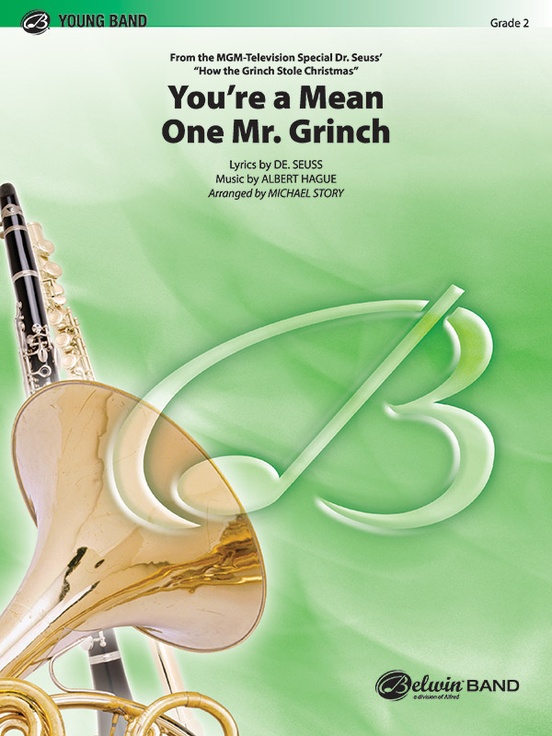 £73.50
£73.50You're a Mean One, Mr. Grinch
A mean old Grinch who steals Christmas? Who ever heard of such a thing? From the delightful television program that lights up our television screen (and our holidays) every year comes this nasty villian's theme song. It's a quick-rehearsing and easy-to-play piece that will be immediately recognized by your holiday concert audience. (duration 1:43)
Estimated dispatch 3-5 working days
-
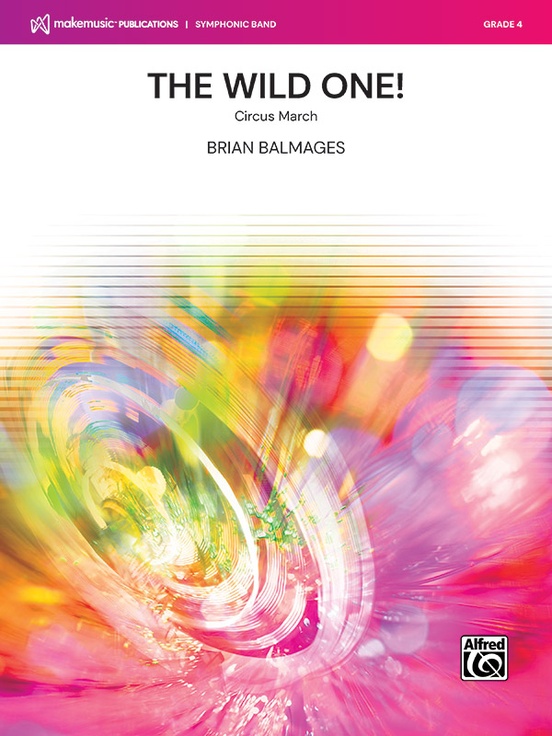 £87.50
£87.50The Wild One! - Brian Balmages
is a blistering circus march by Brian Balmages. Designed to showcase your entire ensemble, this adrenaline-packed work will bring your audience to its feet regardless of where you program it in your concert. Cleverly combining the traditional march form with contemporary elements, this barnburner is sure to turn heads and be a ton of fun for performers and audiences alike. There are plenty of opportunities for percussionists, including several optional parts for directors with larger sections. (2:40)
Estimated dispatch 3-5 working days
-
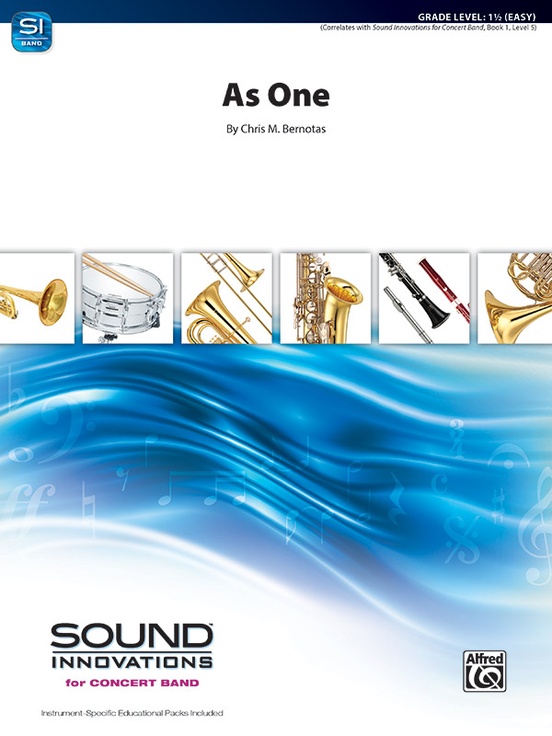 £58.50
£58.50As One - Chris M. Bernotas
There is no better model of coming together in unity than being part of a musical ensemble. This delightful concert overture by Chris M. Bernotas features optional solos that join together, uniting the full ensemble. This piece has memorable melodies and a fun groove section, making it an excellent choice for a concert or contest. (3:20) Correlates to , Level 5.
Estimated dispatch 3-5 working days
-
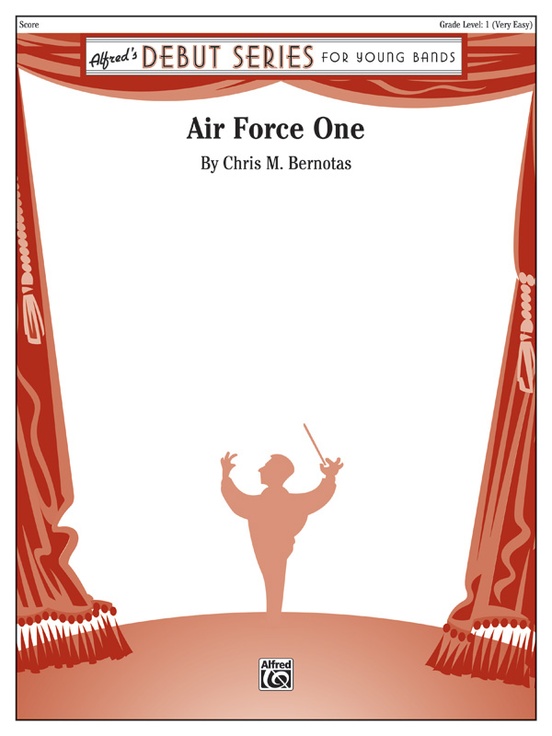 £48.95
£48.95Air Force One - Chris M. Bernotas
evokes the proud spirit that is symbolized by the Presidential aircraft. With its rhythmic drive and uplifting melody, this will quickly become a favorite of your students and audience alike. Every section of the band will keep busy as they take flight in this piece. Written with the young band in mind, this piece has engaging rhythms, memorable melodies, and exciting percussion parts! This title is available in MakeMusic Cloud. (2:20)
Estimated dispatch 3-5 working days
-
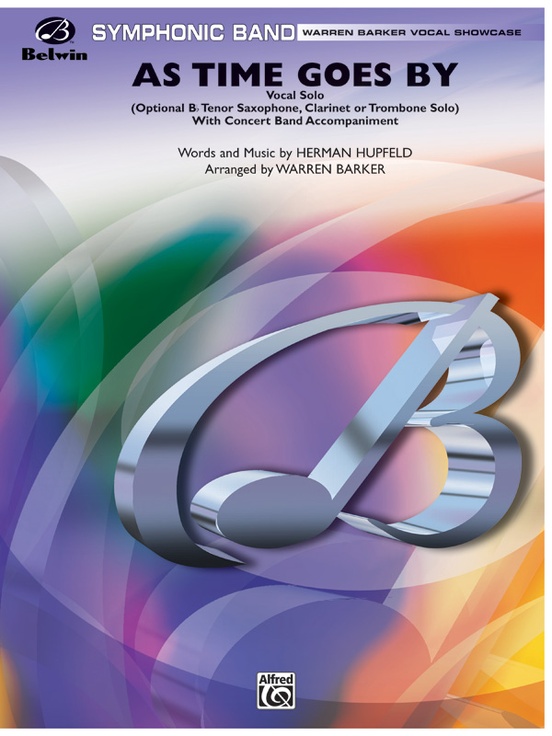 £84.50
£84.50As Time Goes By - Herman Hupfeld / arr. Warren Barker
It seems that every community or school has at least one vocal soloist just ready, willing and able to perform with your concert band. To fill the need for audience-pleasing 'pop' standards, Warren Barker recently launched his and contributes this delightful new scoring to that series. Should you wish to use an instrumental soloist, parts are included for solo tenor saxophone, clarinet or trombone. Wonderfully lush 'Barker' treatment. (Vocal range: A-flat below staff to fourth line D, treble clef) (duration 3:36)
Estimated dispatch 3-5 working days
-
£248.99
Odysseia - Maxime Aulio
Washed up on the Phaeacian shore after a shipwreck, Odysseus is introduced to King Alcinous. As he sits in the palace, he tells the Phaeacians of his wanderings since leaving Troy. Odysseus and his men fi rst landed on the island of the Cicones wherethey sacked the city of Ismarus. From there, great storms swept them to the land of the hospitable Lotus Eaters. Then they sailed to the land of the Cyclopes. Odysseus and twelve of his men entered the cave of Polyphemus. After the single-eyed giantmade handfuls of his men into meals, Odysseus fi nally defeated him. He got him drunk and once he had fallen asleep, he and his men stabbed a glowing spike into the Cyclop's single eye, completely blinding him. They escaped by clinging to the belliesof some sheep. Once aboard, Odysseus taunted the Cyclop by revealing him his true identity. Enraged, Polyphemus hurled rocks at the ship, trying to sink it. After leaving the Cyclopes' island, they arrived at the home of Aeolus, ruler of the winds.Aeolus off ered Odysseus a bag trapping all the strong winds within except one - the one which would take him straight back to Ithaca. As the ship came within sight of Ithaca, the crewmen, curious about the bag, decided to open it. The winds escapedand stirred up a storm. Odysseus and his crew came to the land of the cannibalistic Laestrygonians, who sank all but one of the ships. The survivors went next to Aeaea, the island of the witch-goddess Circe. Odysseus sent out a scouting party butCirce turned them into pigs. With the help of an antidote the god Hermes had given him, Odysseus managed to overpower the goddess and forced her to change his men back to human form. When it was time for Odysseus to leave, Circe told him to sail tothe realm of the dead to speak with the spirit of the seer Tiresias. One day's sailing took them to the land of the Cimmerians. There, he performed sacrifi ces to attract the souls of the dead. Tiresias told him what would happen to him next. He thengot to talk with his mother, Anticleia, and met the spirits of Agamemnon, Achilles, Patroclus, Antilochus, Ajax and others. He then saw the souls of the damned Tityos, Tantalus, and Sisyphus. Odysseus soon found himself mobbed by souls. He becamefrightened, ran back to his ship, and sailed away. While back at Aeaea, Circe told him about the dangers he would have to face on his way back home. She advised him to avoid hearing the song of the Sirens; but if he really felt he had to hear, thenhe should be tied to the mast of the ship, which he did. Odysseus then successfully steered his crew past Charybdis (a violent whirlpool) and Scylla (a multiple-headed monster), but Scylla managed to devour six of his men. Finally, Odysseus and hissurviving crew approached the island where the Sun god kept sacred cattle. Odysseus wanted to sail past, but the crewmen persuaded him to let them rest there. Odysseus passed Circe's counsel on to his men. Once he had fallen asleep, his men impiouslykilled and ate some of the cattle. When the Sun god found out, he asked Zeus to punish them. Shortly after they set sail from the island, Zeus destroyed the ship and all the men died except for Odysseus. After ten days, Odysseus was washed up on theisland of the nymph Calypso.
Estimated dispatch 7-14 working days
-
 £248.99
£248.99Odysseia (Concert Band - Score and Parts) - Aulio, Maxime
Washed up on the Phaeacian shore after a shipwreck, Odysseus is introduced to King Alcinous. As he sits in the palace, he tells the Phaeacians of his wanderings since leaving Troy. Odysseus and his men fi rst landed on the island of the Cicones where they sacked the city of Ismarus. From there, great storms swept them to the land of the hospitable Lotus Eaters. Then they sailed to the land of the Cyclopes. Odysseus and twelve of his men entered the cave of Polyphemus. After the single-eyed giant made handfuls of his men into meals, Odysseus fi nally defeated him. He got him drunk and once he had fallen asleep, he and his men stabbed a glowing spike into the Cyclop's single eye, completely blinding him. They escaped by clinging to the bellies of some sheep. Once aboard, Odysseus taunted the Cyclop by revealing him his true identity. Enraged, Polyphemus hurled rocks at the ship, trying to sink it. After leaving the Cyclopes' island, they arrived at the home of Aeolus, ruler of the winds. Aeolus off ered Odysseus a bag trapping all the strong winds within except one - the one which would take him straight back to Ithaca. As the ship came within sight of Ithaca, the crewmen, curious about the bag, decided to open it. The winds escaped and stirred up a storm. Odysseus and his crew came to the land of the cannibalistic Laestrygonians, who sank all but one of the ships. The survivors went next to Aeaea, the island of the witch-goddess Circe. Odysseus sent out a scouting party but Circe turned them into pigs. With the help of an antidote the god Hermes had given him, Odysseus managed to overpower the goddess and forced her to change his men back to human form. When it was time for Odysseus to leave, Circe told him to sail to the realm of the dead to speak with the spirit of the seer Tiresias. One day's sailing took them to the land of the Cimmerians. There, he performed sacrifi ces to attract the souls of the dead. Tiresias told him what would happen to him next. He then got to talk with his mother, Anticleia, and met the spirits of Agamemnon, Achilles, Patroclus, Antilochus, Ajax and others. He then saw the souls of the damned Tityos, Tantalus, and Sisyphus. Odysseus soon found himself mobbed by souls. He became frightened, ran back to his ship, and sailed away. While back at Aeaea, Circe told him about the dangers he would have to face on his way back home. She advised him to avoid hearing the song of the Sirens; but if he really felt he had to hear, then he should be tied to the mast of the ship, which he did. Odysseus then successfully steered his crew past Charybdis (a violent whirlpool) and Scylla (a multiple-headed monster), but Scylla managed to devour six of his men. Finally, Odysseus and his surviving crew approached the island where the Sun god kept sacred cattle. Odysseus wanted to sail past, but the crewmen persuaded him to let them rest there. Odysseus passed Circe's counsel on to his men. Once he had fallen asleep, his men impiously killed and ate some of the cattle. When the Sun god found out, he asked Zeus to punish them. Shortly after they set sail from the island, Zeus destroyed the ship and all the men died except for Odysseus. After ten days, Odysseus was washed up on the island of the nymph Calypso.
Estimated dispatch 7-14 working days
